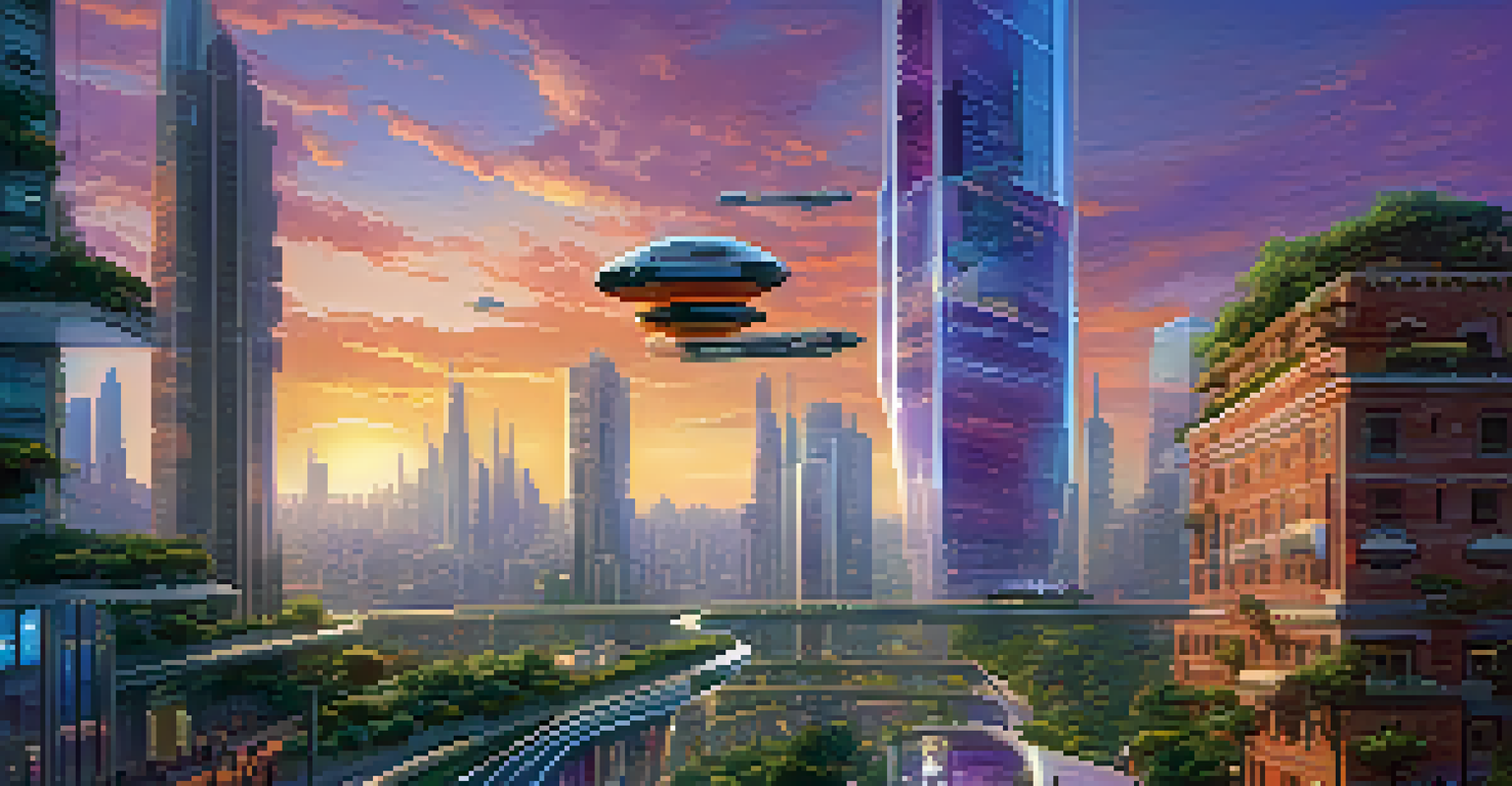Creative Writing and Science: Blending Facts with Fiction

The Intersection of Creativity and Scientific Inquiry
Creative writing and science might seem like two distinct realms, but they often intersect in fascinating ways. At their core, both disciplines rely on imagination, exploration, and the quest for understanding. Just as scientists hypothesize and experiment, writers concoct narratives that explore human experiences and emotions.
Science fiction writers are the new philosophers, asking the questions that science leaves unanswered.
For instance, consider how a science fiction author might envision a future shaped by technological advancements. This creative exercise not only entertains but also stimulates dialogue about real-world scientific possibilities and ethical dilemmas. By blending facts with fiction, writers can make complex scientific ideas accessible and engaging.
Moreover, when writers incorporate scientific principles into their stories, they invite readers to ponder deeper questions about existence, morality, and the universe. This synergy between creativity and science enriches both fields, creating a tapestry of knowledge and imagination.
The Role of Research in Creative Writing
Research is a cornerstone of effective creative writing, especially when delving into scientific themes. Writers often spend hours, if not days, gathering information to ensure their narratives are grounded in reality. This commitment to authenticity not only enhances the story but also builds credibility with the audience.

Take, for example, a novel that explores genetic engineering. The author must understand the basics of genetics to portray the science accurately, ensuring that readers can engage with the story without getting lost in inaccuracies. By weaving factual elements into their narratives, writers can captivate readers while educating them.
Creativity Enhances Scientific Dialogue
Creative writing intersects with science by using imagination to explore complex ideas and stimulate discussions about real-world issues.
Incorporating research doesn’t mean sacrificing creativity; rather, it can spark new ideas and plot twists. The interplay between factual knowledge and imaginative storytelling can lead to groundbreaking narratives that resonate on multiple levels.
Harnessing Imagination to Explain Complex Concepts
One of the unique strengths of creative writing is its ability to simplify complex scientific concepts. Writers can craft relatable analogies or vivid imagery that help demystify challenging subjects, making them more digestible for the average reader. This approach can transform a dense topic into an engaging story.
The goal of science is to understand the world, while the goal of art is to understand ourselves.
For instance, a writer might compare the structure of an atom to a miniature solar system, making the science of chemistry more relatable. Such comparisons not only clarify the concept but also spark curiosity, encouraging readers to explore further. When facts are woven into imaginative narratives, they become more memorable.
This technique serves as a bridge, connecting readers with scientific ideas they might otherwise overlook. By using creativity to explain science, writers can inspire a new generation of thinkers and innovators.
Fictional Frameworks for Real-World Issues
Creative writing offers a unique platform to address real-world issues through fictional lenses. By embedding factual scenarios within a narrative, writers can shed light on scientific dilemmas, such as climate change or medical ethics, in a way that resonates emotionally with readers. This approach can provoke thought and inspire action.
For instance, a dystopian novel set in a world ravaged by environmental disaster can provoke readers to reflect on current practices and policies. Through the lens of fiction, complex scientific challenges become relatable stories that ignite passion and encourage dialogue.
Research Grounds Creative Narratives
Incorporating thorough research into creative writing ensures accuracy, enriching the story while captivating and educating readers.
Moreover, such narratives can serve as a catalyst for change, motivating individuals to confront pressing issues in their own lives and communities. The blend of fact and fiction empowers writers to advocate for awareness and solutions.
The Power of Character Development in Scientific Narratives
Characters are the heart of any good story, and when it comes to scientific narratives, they can make complex ideas more relatable. By developing characters who grapple with scientific dilemmas, writers provide readers with a human connection to the facts. This emotional engagement can enhance understanding and empathy.
For example, a protagonist who struggles with the implications of artificial intelligence can lead readers through the nuances of the technology, exploring both its potential and its risks. Through their journey, readers gain insight into the science while rooting for the character's success.
Ultimately, well-crafted characters humanize scientific concepts, making them more approachable. This connection encourages readers to ponder the implications of the science beyond the page.
Ethical Considerations in Blending Fiction with Science
As writers weave science into their narratives, they must also navigate the ethical implications of their storytelling. Misrepresentation of scientific facts can lead to misunderstandings and misinformation, which is particularly concerning in today's information-driven society. Thus, writers bear a responsibility to portray science accurately.
This ethical obligation extends to how scientific advancements are represented. For instance, while exploring genetic modification in a story, it’s essential to address the moral complexities involved rather than simply sensationalizing the topic. This thoughtful approach fosters informed discussions among readers.
Fiction Addresses Real-World Issues
Through fictional storytelling, writers can highlight pressing scientific dilemmas, fostering emotional connections and inspiring action among readers.
Ultimately, ethical storytelling not only respects the science but also enhances the narrative's impact, encouraging readers to think critically about the information presented. A well-informed reader is empowered to engage with the world in a more responsible manner.
Creative Writing as a Tool for Scientific Communication
In an age of rapid scientific advancement, creative writing serves as a powerful tool for effective scientific communication. It allows complex ideas to be conveyed in an engaging and digestible manner, reaching audiences that might not typically engage with scientific literature. This accessibility can foster greater public interest in science.
Consider how stories about groundbreaking research in medicine can demystify the process and outcomes for the layperson. By presenting the information through narrative, writers can spark interest and encourage readers to learn more about the subject matter.

As a result, creative writing can bridge the gap between scientists and the public, promoting an informed society that values scientific inquiry. When facts are transformed into compelling narratives, they resonate more deeply with readers, inspiring curiosity and understanding.